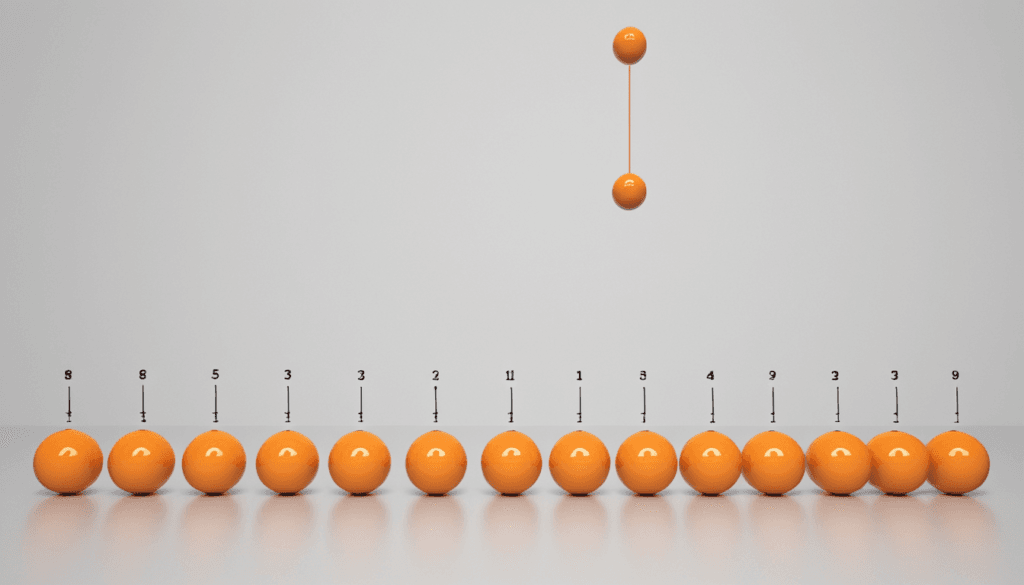Sorting algorithms are the backbone of computer science, powering everything from database queries to search engine results. One of the most efficient and widely used algorithms is Quick Sort. But what makes it so powerful, and how does its performance change in different scenarios? Let’s dive into its complexities and better understand its potential through real-world examples.

What is Quick Sort?
Quick Sort is a divide-and-conquer algorithm that sorts arrays by recursively breaking them into smaller pieces. It selects a “pivot” element, arranges the rest of the array relative to the pivot, and repeats the process for the subarrays.
Why Analyze Algorithm Complexity?
Understanding an algorithm’s complexity helps developers make informed decisions about which sorting method to use in specific scenarios. Quick Sort, despite its elegance and speed, can exhibit widely varying performance based on how the pivot is selected and the input data’s distribution.
Understanding Quick Sort
Quick sort, as the name says, is designed to sort items quickly. It’s an algorithm called divide-and-conquer, meaning it splits a large problem into smaller, more manageable pieces. Here’s the basic rundown of how it works:
- Choose a Pivot: This is the part of the algorithm where it selects a particular element from the array to work with as its pivot. The pivot may be the first element, the last element, or even some random element.
- Partitioning: Divide the array into two sub-arrays. Elements that are smaller than the pivot, and elements larger than the pivot.
- Recursive Sorting: Repeat the same steps for the sub-arrays. This will repeat until the whole array has been sorted.
Example Time
Consider sorting the array [7, 2, 1, 6, 8, 5, 3, 4]:
- Choose a pivot (e.g., the last element,
4). - Partition the array:
[2, 1, 3](left of4), and[7, 6, 8, 5](right of4). - Apply Quick Sort recursively to
[2, 1, 3]and[7, 6, 8, 5]. - Continue until the subarrays are single elements.
Result: [1, 2, 3, 4, 5, 6, 7, 8].
Pivot Selection Strategies
Choosing the pivot wisely is critical to performance. Common strategies include:
- First Element: Works well for nearly random data.
- Last Element: Easy to implement but risks poor performance on sorted arrays.
- Middle Element: Offers balanced performance in many cases.
- Random Selection: Reduces bias but requires additional computation.
Pro Tip: Use the Median-of-Three Method (select the median of the first, middle, and last elements) to minimize worst-case scenarios.
Quick Sort Algorithm Complexity
Now, onto the juicy part: complexity! Quick sort’s efficiency is often measured in terms of time complexity and space complexity.
Time Complexity of Quick Sort
- Best Case: O(n log n) – This occurs when the pivot chosen divides the array into two equal halves consistently. Imagine finding the median every time—ideal but rare!
- Average Case: O(n log n) – In practical situations, it performs at this complexity, especially with good pivot choices. So, if you’re sorting a thousand items, you’re looking at about a thousand times the logarithm of a thousand. That’s not bad!
- Worst Case: O(n²) – This happens when the smallest or largest element is always picked as the pivot, leading to unbalanced partitions. Think of sorting a nearly sorted array; it can quickly spiral out of control!
Space Complexity of Quick Sort
It is also efficient in terms of space:
- O(log n) for recursive calls if we consider the depth of the recursion. This is quite a compact footprint compared to other algorithms like merge sort, which requires O(n) additional space.
Best Case Time Complexity of Quick Sort: O(n log n)
What Happens in the Best Case?
In the best-case scenario, the pivot divides the array into two equal halves at every step. This ensures that the recursion depth is logarithmic (log n), while each partitioning operation is linear (n).
Key Steps Counted:
- At depth 1: The array is divided into two parts.
- At depth 2: Each part is further divided, and so on.
- Total levels = log n.
Thus, the overall complexity is n × log n.
When is the Best Case Likely?
The best case occurs when the pivot is chosen carefully, such as using the median-of-three method or for data with uniform distributions.
Real-World Relevance
In real-life applications like database sorting or in-memory computations, quick sort performs exceptionally well when the input data is not skewed. For example, sorting a shuffled product catalog often aligns with the best case.
Average Case Time Complexity of Quick Sort: O(n log n)
What Happens in the Average Case?
In the average case, the pivot divides the array into uneven but reasonably balanced parts. The recursion still has a logarithmic depth, and the partitioning remains linear.
Mathematical Derivation:
The average-case complexity is derived by summing the work done at each level of recursion:
- Each level involves partitioning n elements.
- Logarithmic levels of recursion contribute to the final complexity: O(n log n).
Why Does This Happen?
The uneven splits (e.g., 60-40 or 70-30) still allow the algorithm to break down the array efficiently without creating extreme imbalances.
Real-World Examples
Imagine sorting a moderately shuffled array of names in a phonebook. Even with suboptimal pivots, the algorithm achieves near-optimal performance.
Pro Tip: For most practical applications, average-case performance aligns closely with best-case complexity, making Quick Sort a reliable choice.
Worst Case Time Complexity of Quick Sort: O(n²)
When Does the Worst Case Happen?
The worst case arises when the pivot divides the array into one large subarray and one empty subarray. This creates an unbalanced recursion tree, drastically increasing the sorting time.
Scenarios:
- Already Sorted Array:
Input:[1, 2, 3, 4, 5].
If the pivot is always the first or last element, the partitioning process will keep producing one empty and one full subarray. - All Elements are the Same:
Input:[5, 5, 5, 5, 5].
Every partition leaves elements unchanged, making the process redundant.
Mitigation Strategies:
- Randomized Pivot: Randomly select the pivot to avoid predictable behavior.
- Median-of-Three: Choose the median of the first, middle, and last elements as the pivot for better balance.
Space Complexity
Why is Space-Efficient?
Quick Sort is an in-place algorithm, requiring minimal additional memory. It reorganizes the elements within the input array without creating auxiliary arrays.
Average Case:
- Uses O(log n) auxiliary space for the recursion stack.
- Each recursive call stores the pivot index, but the depth remains logarithmic in balanced cases.
Worst Case:
- In unbalanced recursion, the stack usage can grow to O(n), increasing memory consumption.
Comparison of Quick Sort Algorithm Complexity
Here’s a quick comparison of quick sort with some other sorting algorithms:
| Algorithm | Best Case | Average Case | Worst Case | Space Complexity |
| Quick Sort | O(n log n) | O(n log n) | O(n²) | O(log n) |
| Merge Sort | O(n log n) | O(n log n) | O(n log n) | O(n) |
| Bubble Sort | O(n) | O(n²) | O(n²) | O(1) |
| Heap Sort | O(n log n) | O(n log n) | O(n log n) | O(1) |
| Selection Sort | O(n²) | O(n²) | O(n²) | O(1) |
| Insertion Sort | O(n) | O(n²) | O(n²) | O(1) |
Real-world Applications
1. Database Sorting
It is commonly used in database indexing for organizing rows efficiently. When operating on memory-resident datasets, its speed and in-place nature make it a go-to choice.
2. Hybrid Algorithms
Modern implementations use Introsort, which begins with Quick Sort and switches to Heap Sort for unbalanced partitions. This combination ensures O(n log n) complexity consistently.
Optimization in Practice:
Example: Sorting operations in Python’s sorted() function are built on hybrid approaches inspired by Quick Sort.
def quick_sort(arr):
if len(arr) <= 1:
return arr
pivot = arr[len(arr) // 2]
left = [x for x in arr if x < pivot]
middle = [x for x in arr if x == pivot]
right = [x for x in arr if x > pivot]
return quick_sort(left) + middle + quick_sort(right)
# Example
data = [10, 7, 8, 9, 1, 5]
sorted_data = quick_sort(data)
print("Sorted Array:", sorted_data)
Final Thoughts
In conclusion, quick Sort is an interesting algorithm that strikes a compelling balance between speed and efficiency. Although it may not always be the optimal choice, particularly in worst-case situations, its average performance is tough to surpass. Whether you’re an experienced programmer or just starting to explore algorithms, grasping the nuances of quick sort and its complexities can greatly improve your sorting skills. So, the next time you face a sorting challenge, consider how it could play a role in your approach! Have you come across any real-world situations where quick sort made a significant impact? Feel free to share your thoughts in the comments below!









